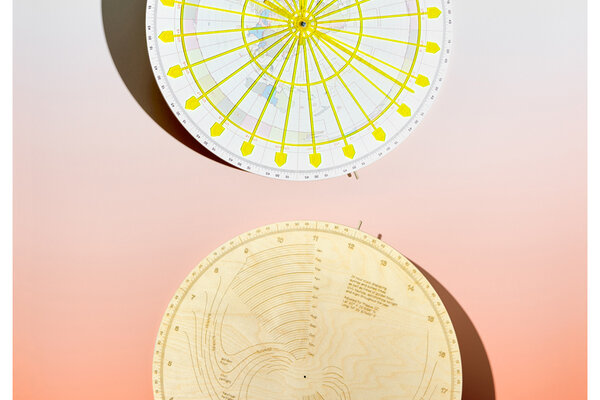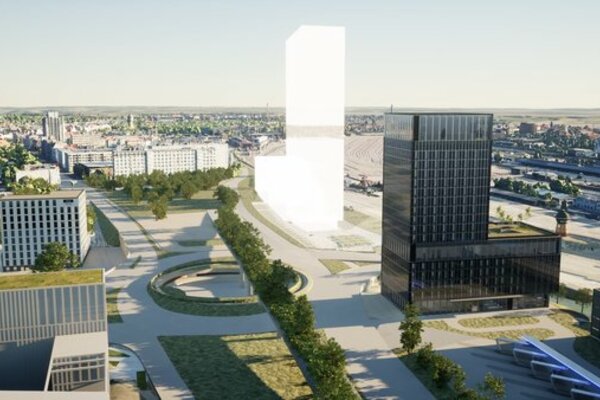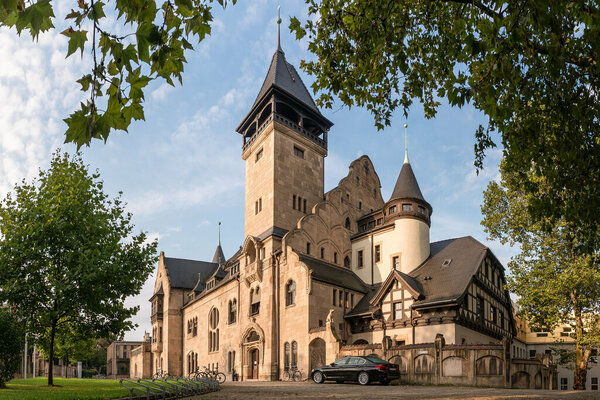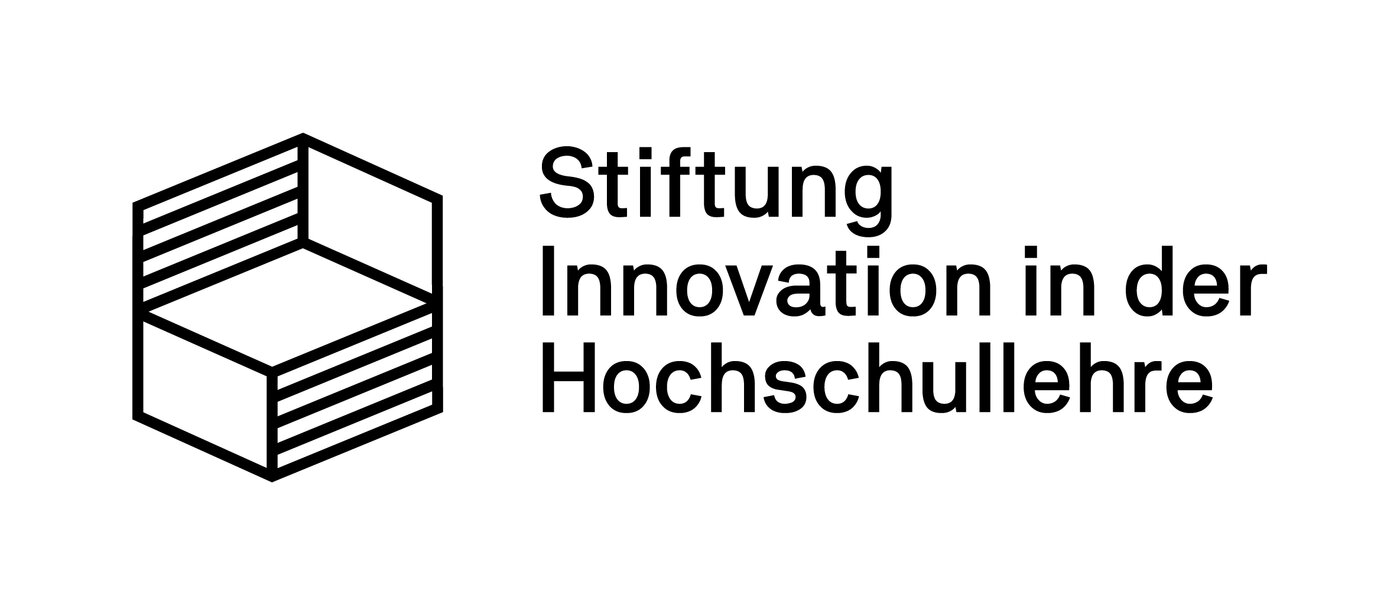Was bedeutet der Entwicklungssprung bezüglich maschinell lernender Systeme für uns als Designer*innen und Künstler*innen?

Was bedeutet der Entwicklungssprung bezüglich maschinell lernender Systeme für uns als Designer*innen und Künstler*innen?
IN THE BLINK OF AI
Symposium zu Künstlicher Intelligenz in Kunst und Design
Mittwoch, 17. Mai 2023
10:00 – 17:00 Uhr
Dachsaal, Campus Neuwerk
Was bedeutet der Entwicklungssprung bezüglich maschinell lernender Systeme für uns als Designer*innen und Künstler*innen?
Einen Tag lang informieren wir uns zu verschiedenen Werkzeugen künstlicher Intelligenz und entwickeln Fragen für unsere künstlerisch-gestalterische Arbeit und zu den Auswirkungen auf die Hochschullehre.
Das Symposium steht allen Studierenden und Mitarbeitenden der Burg offen.
10 Uhr
Mensch Maschine, wir brauchen Kontemplation. Intelligente Systeme und ihre Potenziale in Gestaltungsprozessen
Einführender Vortrag mit Q&A
Marc Engenhart ist Designer, Künstler und Koautor des kürzlich erschienenen Standardwerks »Design und künstliche Intelligenz« für Designer:innen aller Fachdisziplinen.
11 Uhr
Input: Wie verändert AI den kreativen Prozess im Berufsfeld Design?
Beobachtungen über die Veränderung kreativer Prozesse in der Designwirtschaft. Welche Trends, Chancen und Gefahren gibt es aktuell? Wie müssen wir unser Mindset für einen gesunden Umgang mit dem Thema AI anpassen?
Ronny Schmidt ist als 3D Director für das Studio Colors and the Kids in Berlin tätig. In seiner 10+ jährigen Laufbahn arbeitete für Kunden wie Apple, Google, Nike und Balenciaga.
12 - 17 Uhr Ausstellungsstraße – jederzeit zugänglich
Unter anderem mit:
SUPERBOOTH (Tristan Schulze)
Facing You (Robin Godwyll, Yang Ni)
Trained Sculptor (Nikos Probst)
SnapSynth A.I. (Saou Tanaka, Takato Wankmüller)
AUTOMATON (Tristan Schulze)
One button A.I. (Turboflip)
Die Schaukel (Turboflip)
BURG ♥ Keanu Reeves (Turboflip)
Creative Processing - Integration von AI in das künstlerische/kreative
Schaffen (Normann Seils)
Workshop-Programm:
12:00 – 13:00 Riffusion Walkthrough, Text to Audio (Roman Gebhardt)
13:00 – 14:30 Einführung in Computer Vision und Image Classification (Robin Godwyll)
14:00 – 15:00 Riffusion Walkthrough, Audio to Audio (Roman Gebhardt)
15:00 – 16:30 Einführung in Computer Vision und Image Classification (Robin Godwyll)
16:00 – 17:00 Riffusion Walkthrough + allgemeines Q&A (Roman Gebhardt)
Anmeldung zu den Workshops
Falls noch Plätze frei sind, ist auch eine spontane Teilnahme möglich.
RIFFUSION is a generative music AI model, based on Stable Diffusion, designed to generate images of spectrograms from text prompts. By fine-tuning the model on images of spectrograms and accompanying text, it can produce infinite variations of an audio prompt. The generated spectrograms can be converted into actual audio clips using downstream audio processing, allowing for text to music creation.
Riffusion utilizes the same web UIs and techniques as Stable Diffusion, such as img2img, inpainting, negative prompts, and interpolation. The code and community for this innovative project is publicly available, enabling users to easily explore and experiment with AI-generated audio from text.
With an academic background in Music Information Retrieval, Roman Gebhardt is leading the Data Science team of the Music AI company Cyanite, providing tools and solutions for music analysis, metadata generation, and music recommendation.
17 Uhr
PromptBattle – text-to-image prompting contest
Konsum und Villa Raum Nr. 102
Anmeldung für Teilnehmer*innen des PromptBattle
Zuschauen ist jederzeit möglich!
Prompt Battle is a live event where people compete against each other using text-to-image software. Show off your prompt skills and maybe the audience will choose you as the winner who elicited the most surprising, disturbing or beautiful images from the latent spaces of DALL·E 2, Stable Diffusion, Midjourney, Craiyon, etc.
When Open AI published its state of the art image generator DALL·E 2 in April 2022 as a close beta to a selected group of early testers, the release was accompanied by a long document contemplating potential risks and limitations of the new technology. Among the many concerns, Open AI also considered, that »if commercial access is eventually granted, those who have more experience using and building with the technology may have first mover advantage – for example, they may have more time to develop better prompt engineering techniques.« Now that users have a variety of models at their disposal to develop these techniques, the question becomes more and more prevalent: Do you have what it takes to become a Prompt Engineer?
Prompt Battle Delegation: Emily Krause, Lina Schwarzenberg & Ella Zickerick
The Prompt Battle format was developed by Florian A. Schmidt & Sebastian Schmieg with the design students at HTW Dresden: Bernadette Geiger, Ella Zickerick, Emily Krause, Levi Stein, Lina Schwarzenberg, Robert Hellwig














Mittwoch, 17. Mai 2023
10:00 – 17:00 Uhr
Dachsaal, Campus Neuwerk
ab 17 Uhr PromptBattle Raum 102, Villa Neuwerk
Anmeldung zu den Workshops

